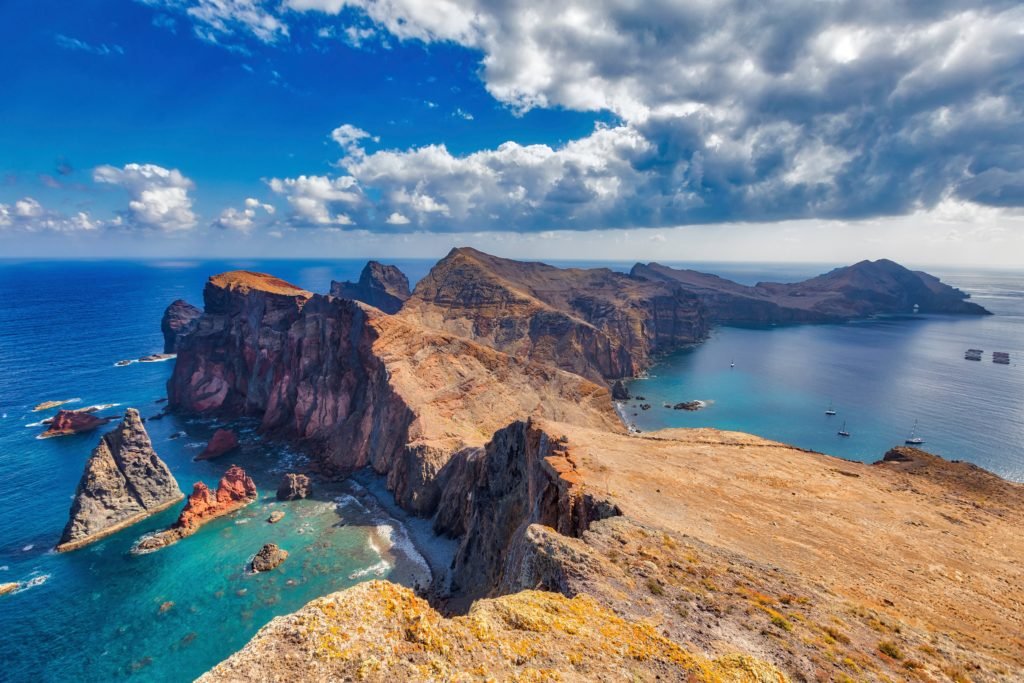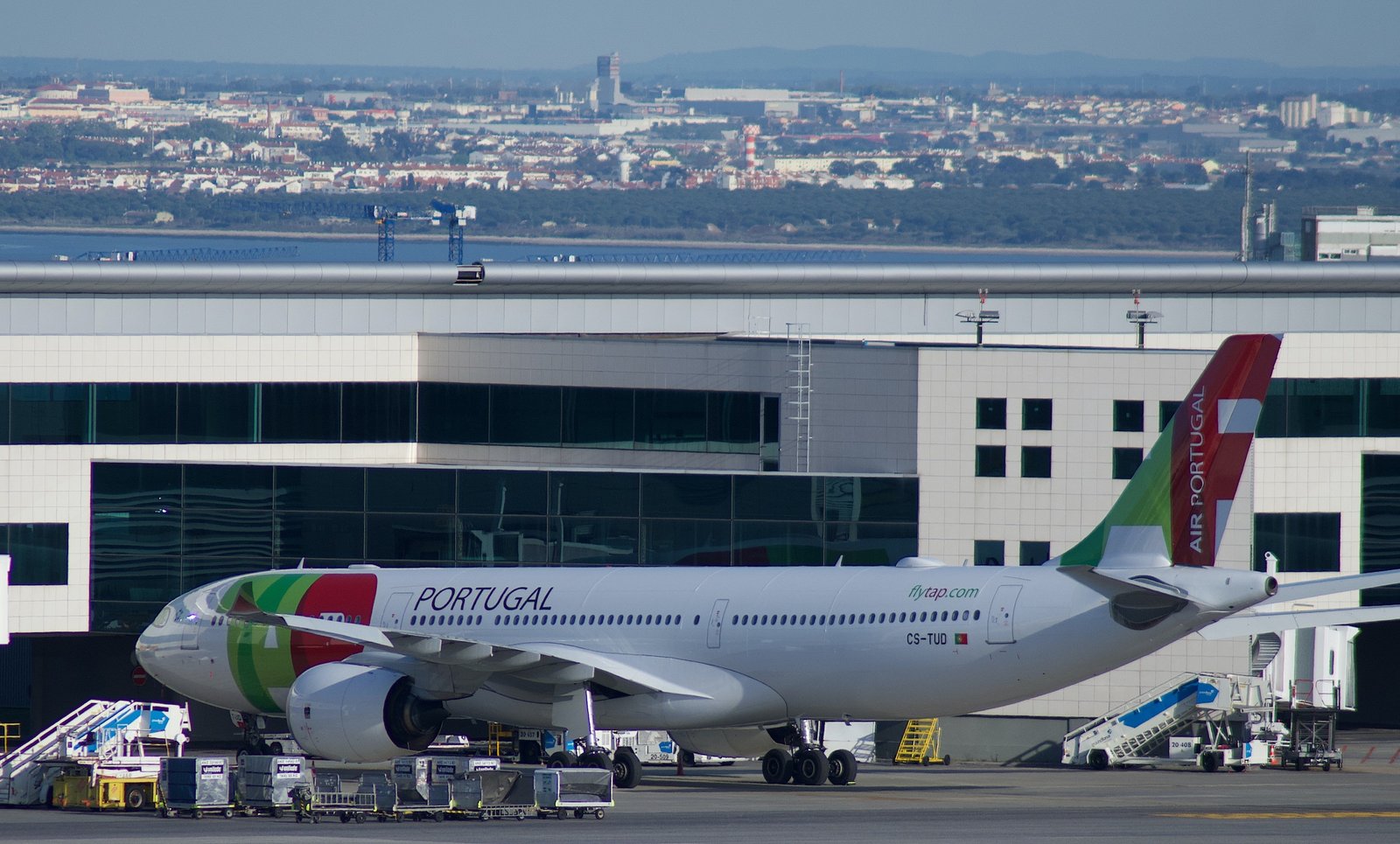The Azores archipelago is, for many, a remote area in the North Atlantic Ocean. In reality, it is easily and cheaply accessible from mainland Portugal. The other reality is these nine islands have a lot to explore, especially in you travel during the warmer months (May through September) and it’s almost impossible to cram all of them into one article.
For this reason, we will focus on São Miguel, the largest island, which is absolutely action-packed.
Contents
Before we start
All of the Azorean islands, much like the other Portuguese archipelago, Madeira, lack a robust public transportation system, so we highly recommend you rent a car to travel around.
While you’re at it, get an official map beforehand too, since Google Maps aren’t to be trusted on some of the smaller roads. But that just adds another layer of adventure, doesn’t it? Let’s start exploring São Miguel!
Graça Farmer’s Market
The Graça Market in Ponta Delgada (S. Miguel’s capital city) is a small but bustling square where pineapples, one of the island’s most iconic exports, stand out. However, the cheese store is often hailed as the best thing on this market, so be sure to stop by. In Portugal, the Azores are known for the quality of their dairy products, namely milk and cheese, which come from “happy cows” living on the islands’ green pastures.
Shopping at Louvre Micaelense
The most beautiful store in São Miguel is called Louvre. When it opened in 1904, it was a distinguished shop selling fine products imported from France. Now the items for sale are mainly Azorean: tea black and green tea (fun fact: the Azores currently have Europe’s only tea plantation!), preserves, jams, and other delicious things “made in Azores” (look out for the seal).
Another reason to go to the Louvre is “o Segredo” (the Secret), a chocolate cake that is very much this Louvre’s Mona Lisa. While you’re there, take the opportunity to stock up on Vila Franca do Campo cheesecakes.
The Up and Coming Area
The streets Carvalho Araújo e Pedro Homem and D’Agua in the historic center of Ponta Delgada are being restored and coming back to life as part of a project called “Quarteirão”. This is a plan to introduce a series of creative spaces, such as galleries, studios, bookstores, bars and bring the creative industries to the city center, so stop by and support local artistry.
Parque Terra Nostra (Terra Nostra Garden)
Only 30 minutes away from the capital, Ponta Delgada, you’ll find a 12-acre park with a “botanical library” consisting of Azorean pineapple trees, camellias, azaleas, palm trees, and aquatic plants, amongst others. At the very center lies a warm, muddy-looking pool with thermal water ranging between 35 to 40oC, but there are several spots around the park where you can take a thermal bath and enjoy yourself in the middle of the exotic and verdant landscape. A truly one of a kind experience.
Congro Lagoon & Furnas
The Congro lagoon is synonymous with peace, silence and the purest air on the face of this planet. To get there, you will need to take a dizzying trail down the side of a 3900-year-old crater. But don’t worry, it is a picturesque path, as long as you mind the fallen tree trunks, roots and small holes provoked by rainfall. About 20 minutes later, you will reach a small pontoon where you’ll be able to admire the moss-green lagoon and the dense forest surrounding it. This isn’t a very famous attraction, so you may even get this little treasure all for yourself.
Lagoa do Congro is located on the road from Ponta Delgada to Furnas, specifically on the Achada das Furnas plateau. It has indications about halfway up. Furnas is itself one of Azores’ biggest attractions, since several fumaroles release gas to the atmosphere and its volcanic subsoil is warm enough to boil meat and vegetables, making for an unique version of the Portuguese staple dish “Cozido à Portuguesa” (literally Portuguese boiled dinner”).
Viewpoint Boca do Inferno
This is perhaps the most beautiful viewpoint in São Miguel – but that is, of course, 100% subjective and we don’t want to impose. Some people prefer the Castelo Branco viewpoint or even Vista do Rei or Ponta da Madrugada. Don’t be put off by the name (Boca do Inferno literally translates to Hell’s Mouth), as the view from 1000m meters up is heavenly: the Sete Cidades lagoon (which comprises two lakes connected by a narrow strait; one appears to be blue and the other appears to be green, creating a startling effect), the Canário lagoon and the Rasa lagoon. To get there, start by parking your car near Canário Lagoon. Enter through the gates (closes at 7pm) and follow the indications. It’s only a 15 to 20 minute light walk, but the view will stay with you for a long time.
Liqueurs at Mulher do Capote
Mulher do Capote is a liqueur factory established near Ribeira Quente in 1936. Here is where the best Azorean spirits are made, using only local fruit – except the sour cherry liqueur, which comes from the mainland. You can explore the factory (a guide will give you a quick tour), taste the liqueurs and in the end buy a bottle at an affordable price. One liqueur you can’t miss? Passion Fruit Ezequiel.
Journey to the Center of the Earth
The Gruta do Carvão is an ancient lava tube, currently 1.65km long, located on the outskirts of Ponta Delgada and it is part of Picos Volcanic Complex. This area of significant geological interest is open to the public but visits are subject to appointment (grutadocarvao@amigosdosacores.pt). There are two types of tours: a short path, accessible to all people; or a longer, more demanding route. Both are accompanied by a guide and all the necessary gear is provided.
What else do the Azores have to offer?
What about the other islands? Are they worth traveling to? We recommend you use São Miguel as a hub, as it offers the most complete package: there is no lack of accommodation, restaurants, entertainment and culture. But all the other 8 islands in the Azores Archipelago have something to special present you with.
Terceira is the second biggest island in terms of population, but the number 1 island for festivities. During Carnival season, Easter and June through September, most of the island stops to celebrate certain religious and profane events. Angra do Heroísmo, its capital, has plenty of accommodation options.
São Miguel and Terceira can also be great places to put your feet up for a bit, but Santa Maria was made for that. Sit back, relax and take in some vitamin D from the sun. When your energy levels start rising, we recommend you try snorkeling with the giant but harmless whale sharks (Summer only, June-September).
São Jorge is another adventure-filled island. Canyoning, coasteering, speleology, rock climbing, zipline, you name it. If you’re a thrill-seeker, seek São Jorge! Only a ferry boat ride away there’s the Pico island, easily distinguishable for a peak that rises up to 2,351 meters high, making it the highest mountain in Portugal. This is a stratovolcano with hiking trails that can take you up to the summit, which is a pit crater. The ascent can be made in around two to four hours in good conditions (summertime!). Geological activity is very rare (only 3 times in the past 500 years).
After so much activity, it’s time to join every other seaman: Peter’s bar on the Horta Island. Known for it’s Gin and Tonic and a confluence of people from all over the world. Cheers!
Green pastures, natural pools that stretch out into the Atlantic, birdwatching, waterfalls and lagoons, a verdant and rich flora… are the Azores really missing anything?
Inter-island boat routes are available, as well as airplanes, to allow you to easily jump from one North Atlantic gem to the next if you have some extra time to spare. Are you ready to embark on this adventure?








